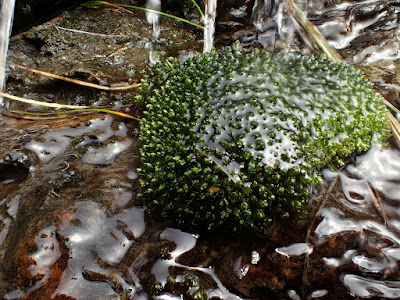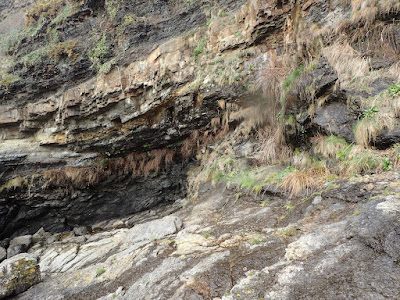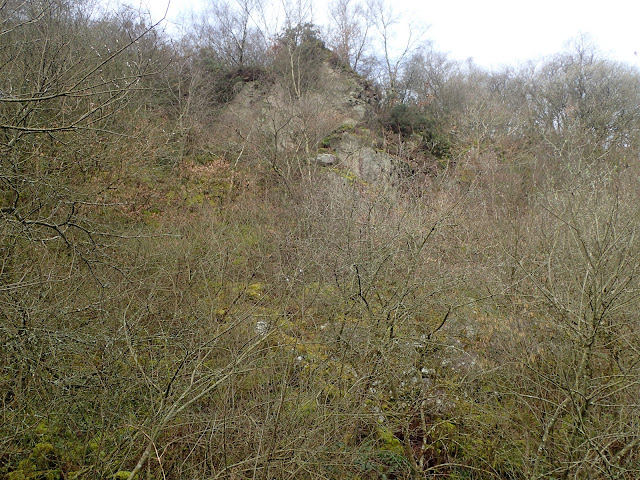Coed Rheidol
A couple of jobs up north gave me an excuse to spend Sunday afternoon up the Rheidol valley to the north of Devil's Bridge. I wasn't expecting to add anything to this well-recorded site, but Bosanquet's rule held true - the best sites always do have more.
The single patch of Drepanolejeunea on a riverside rockface just downstream of Temple Mine doesn't appear in the census catalogue for Ceredigion, but the late Chris Forster-Brown reported a tiny patch from an oak further south during his survey of the NNR in 2020.
The mine itself had Grimmia donniana, and a Pohlia with brown bulbils which had me hoping for andalusica - unfortunately just annontina under the microscope. I failed to notice any of the Gymnomitrion obtusum previously recorded here. A little further upstream, I found some Hylocomiastrum umbratum, Dicranum scottianum with ripe capsules and Lepidozia cupressina; I also re-recorded a patch of Plagiochila heterophylla found by Tom.
A few yards away, a leaning oak tree held a couple of good liverwort patches which included Scapania umbrosa and some potential Lophozia longidens, although I'm struggling to find the red gemmae to clinch the latter (finally! see photo below). My recent find in south Pembs is the only other modern Welsh record, and it hadn't been recorded in Ceredigion before.
Lastly, some dry crags on the valley side had a small Cynodontium which needs further work. Difficult without capsules, but it's unistratose and smooth-celled - possibly tenellum.


























